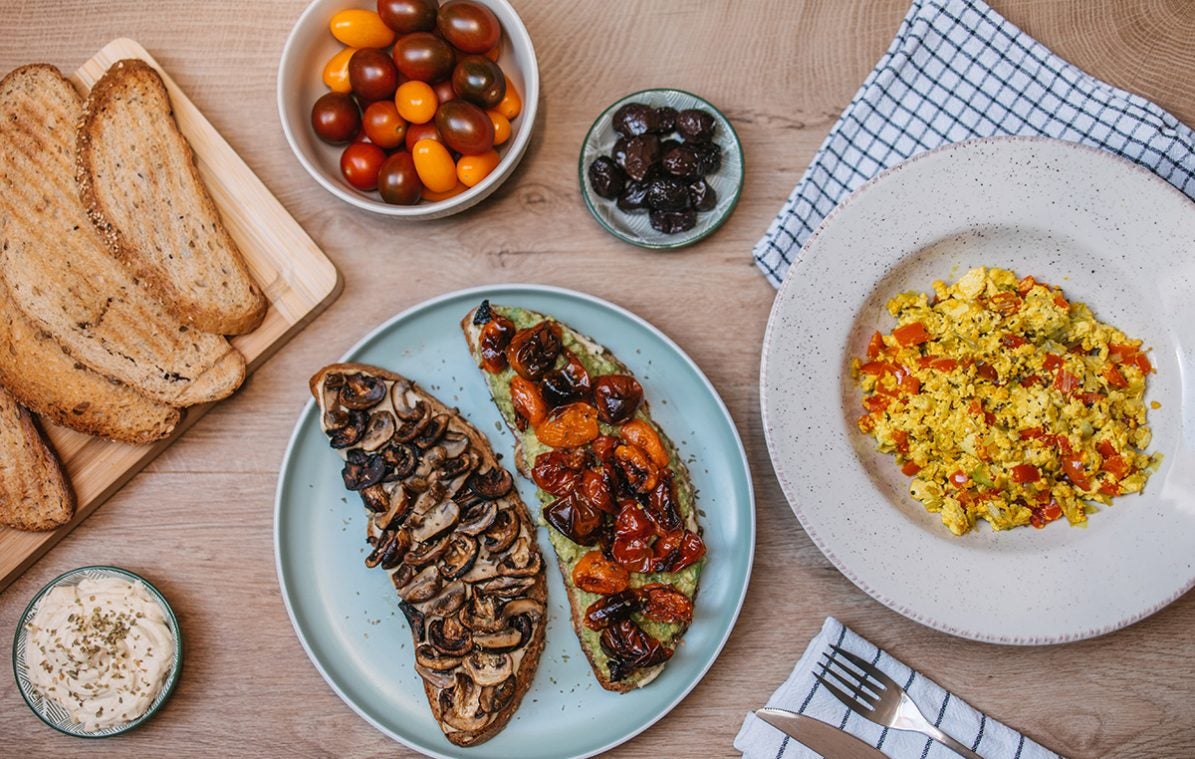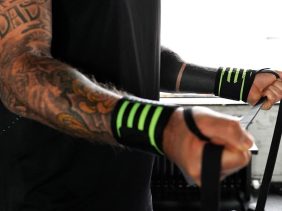Tofu Scramble and Oat Milk Blinis: a Veganuary Experiment
 Vuk-Saric
Vuk-Saric
Until recently, there were many prejudices surrounding vegan nutrition, including claims that vegans only eat salad, and that protein deficiencies were inevitable for people who followed this diet. These days, more and more people are making a conscious decision to eat a purely plant-based diet. While there has always been a handful of athletes who gave up animal products (including honey) without making a song and a dance about it, vegan nutrition has become interesting for the wider athletic community since the Netflix documentary “The Game Changers” aired.
The documentary reports on competitive athletes eating a vegan diet who are achieving top results. Even though it has come under heavy criticism and only presents a one-sided view of the vegan diet, it got me thinking. For me, a vegan diet initially sounded difficult to implement and, above all, one-sided. But that was because I didn’t know how diverse a plant-based diet can be. In my opinion, this is also an important consideration for anyone who has decided to go vegan: make sure you’re well informed and analyze what you’re eating before you commit to becoming a vegan.
Read more: Tips for Building Muscle on a Vegan Diet
One good way to find out whether the vegan diet is right for you is to take part in Veganuary. If you haven’t heard of Veganuary, this is the “vegan January” challenge, which is about eating an entirely plant-based diet for January as part of your New Year’s resolutions. The main reasons people participate are to protect the climate, for animal welfare, and for personal health reasons.
I’m curious and as such, I will be participating in Veganuary in January 2023. At this point, one month sounds doable. I rarely eat meat and I drink Vegan Protein instead of whey protein because I tolerate it better. On the other hand, I do eat a lot of eggs, low-fat cottage cheese, cheese, and shrimp. (I love shrimp!). I’ll have to say goodbye to that for now though. I’m curious whether changing my diet will be difficult, how I will feel during the challenge, and whether I might want to stay vegan after Veganuary. One thing is certain, however, good preparation is half the battle.
How to Prepare for Veganuary
Make a Shopping List
As a fitness instructor, I’m physically active and make sure I eat a protein-rich diet. I’m aware that animal proteins in particular have a high biological value. In other words, animal proteins are most similar to our own body protein in their composition of amino acids (protein’s building blocks). They contain all the essential amino acids the body can’t produce itself and that it needs to build muscle, for example. With entirely plant-based protein sources, things get a bit more complicated. Although there are vegan foods that contain all the essential amino acids, such as soy (e.g. tofu, edamame) or quinoa, most vegan products require different protein sources to be combined to fully cover the amino acid profile. That’s why my first job was to find out how to best meet my protein needs in a purely plant-based way.
As well as protein, carbohydrates and fats are also part of a balanced diet. Luckily, these don’t involve any major changes, since carbohydrates are already vegan. These include potatoes, oatmeal, buckwheat, and whole wheat pasta made without eggs. Nuts and seeds provide healthy fats. It’s useful to note that Omega-3 capsules are also vegan and are obtained from algae. Fruit and vegetables provide vitamins and minerals. I will also start taking Vitamin B12 as this is found almost exclusively in animal foods. Among other things, vitamin B12 contributes to normal functioning of the immune and nervous systems.
Here’s my shopping list for Veganuary:
- Tofu
- Vegan quark made from soy
- Lentil noodles
- quinoa
- Chickpeas
- Oat milk
- Potatoes
- Buckwheat
- Whole wheat pasta
- Oatmeal
- Walnuts
- Cashew butter
- Fruit and vegetables
- Vegan cookies
Telling my Friends and Family About What I’m Doing
Most people I know aren’t vegan, but I do have a few friends and family members who are vegetarians. My husband is neither vegan nor vegetarian and will have to make a few changes in January. After all, he’s the cook in the family! But since we rarely eat meat and I’m the only one who loves shrimp, I’m optimistic that it will work. There are also countless restaurants in Berlin that are either completely vegan or also offer vegan food if we want to eat out.
Things could be more difficult when I visit my parents. We have a bit of a tradition of always having lunch together on Sundays. My family is originally from Russia, so we usually eat something traditionally Russian—and traditional Russian cuisine is definitely not vegan. My mother often makes blinis, the Russian version of pancakes, and the ingredients for blinis include eggs and milk. I’m curious to see how my mom reacts when I ask her about the vegan version of blinis.
Previously I wanted to make her blinis fitness-friendly, so I asked her to use whole wheat instead of wheat flour. Unfortunately, it went wrong. The dough was too sticky and the blinis tasted completely different, so we decided to always make them with wheat flour from then on. That’s why my hopes aren’t high when it comes to the vegan version of blinis, but it’s worth a try.
Veganizing my Favorite Dishes
To make life easier on myself (and my husband), I’m going to veganize my favorite dishes. Maybe this is something you’re familiar with? You have those dishes you cook over and over again because they just taste great, are quick to make, and provide lots of nutrients. I’m going to switch my favorite shrimp pasta for pasta with tofu or seitan, for example. In my breakfast shake, I’ll replace low-fat quark with soy quark. My beloved porridge will stay the same as it’s already vegan, and I’ll try a few new vegan recipes too, of course.
More interesting articles from foodspring:
- 15 tips to Stay Vegan After Veganuary
- Critical nutrients in a vegan diet: overview and the best food tips
- 3 Rules for the Perfect Vegan Meal Before and After Exercise
Sources for this article
We at foodspring use only high-quality sources, including peer-reviewed studies, to support the facts within our articles. Read our editorial policy to learn more about how we fact-check and keep our content accurate, reliable, and trustworthy.





























